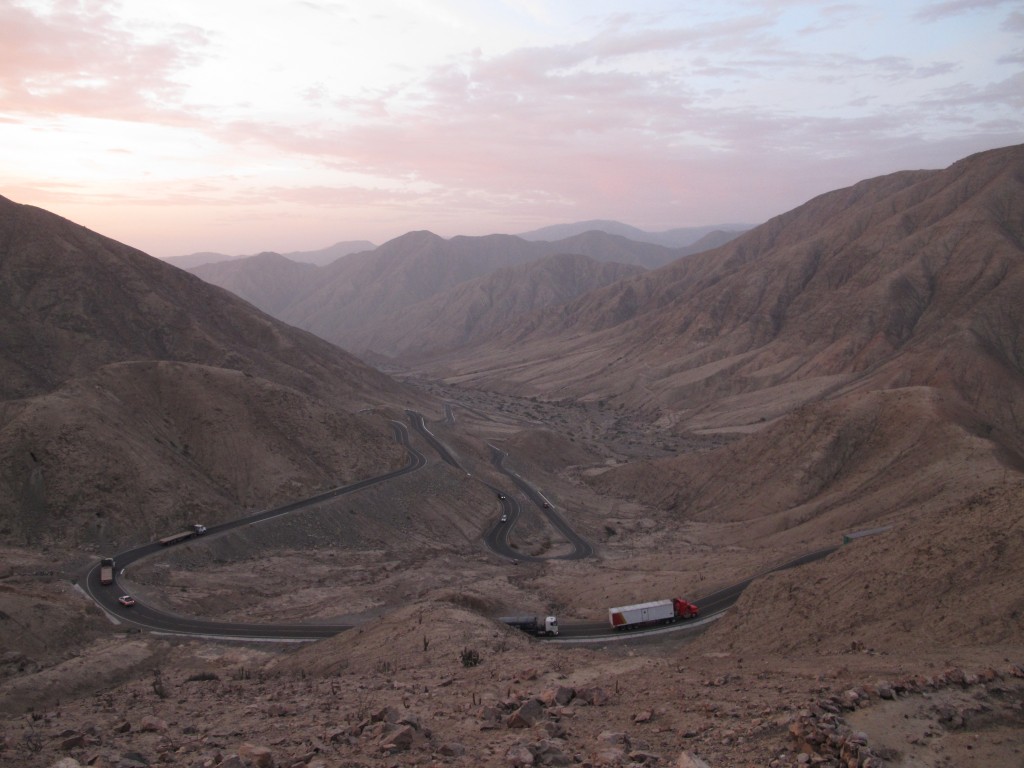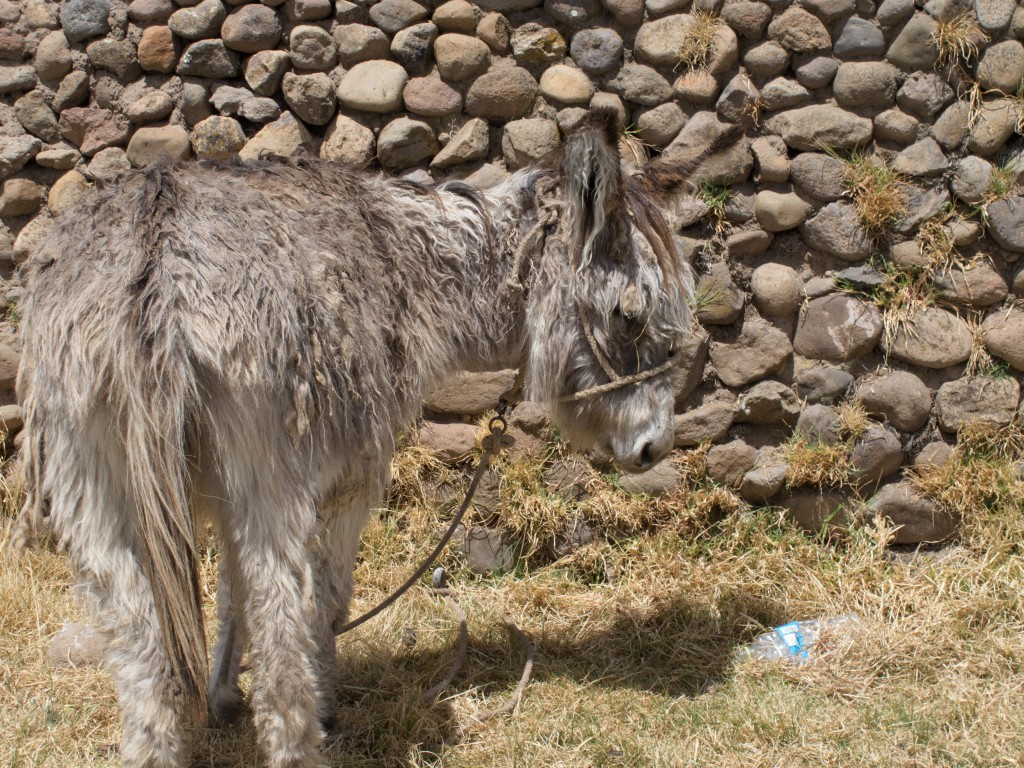From vicunas to insects
The mountain is calling me back, after those quite flat few hundred kilometers. The return will be drastic, climbing 3.500 meters in less than a hundred kilometers. The slope is smooth, but without stopping climbing. It will take me two days, cheered up by motorcycle travelers going to Cusco. I try not to think too much about the fact that they’ll make the distance in two short days while I’ll take nine days. However, I’ll be able to smell and breath every altitude change. The road to Cusco is not a simple transit, a simple climb to the sacred city. You need to, after endless curves in a Moon landscape, cross a pampa where vicunas are grazing, scattered with lagoons where are bathing the flamencos. Then, it’s back to vegetation, passing many valley, each of them with its flavor. The deepest of them left me with marks on my hands for many weeks. Little hungry insects were following me while I was climbing, letting appear the next morning hundreds of little blood bubbles on my hands. Hopefully, I was wearing long pants!
Cusco’s stage set
Leaving a little town early morning, with the full intention to get to Cusco in the afternoon, I see rocks and branches on regular basis on the road. I go around them, and after a curve, it’s a whole barricade made of wood and rocks that I see in the distance, maintained by a dozen of men and women. It’s striking day today in the region, and the process seems to be well trained. Cyclist don’t seem to be part of the people to whom we block the transit, even being helped to get my bike over the barricade. The demonstration is against budget cuts, I wish them good luck and take advantage of a desert road, climbing the pass bringing me in the Cusco valley. Many barricades are on the way, but they let me go, without having to negotiate my way.
While I was taking my traditional almuerzo in the city before Cusco, the traffic starts again on the main road. «The strike is already over?», that I ask to the man beside me. «Yeah, it lasts only the morning…» To know how they can get their point through when you already know in advance when the blockade ends …
Even if the traffic started again, barricades were only half gone. While entering Cusco, things worsen: broken glass, burnt tires and barbwires were added to rocks and branches. I zigzag through all that, but surrounded by cars and buses in a hurry. Going down the hill to the historical center, demonstrators are facing policeman with transparent shields. I didn’t stop taking a picture. Apart from that, I enter in Cusco like any Peruvian city this size: traffic, honks, messy intersections, unfinsished brick houses our without windows, street sellers, etc.
When my tires get on the first block of a cobblestone street, I get into the show. I am being teleported in an other world. Fine restaurants, boutiques, brand names, luminous window display, public art and grey haired «gringos», a camera with an objective longer than my forearm pending from the neck. Welcome in the Cusco turistica.
Luckily, La Estrellita, the youth hostal which, thanks to word of mouth and to the great pleasure of their quiet owners became the general cyclotourists quarters, is at the border of the center. On one side, you can go sip an expresso, visit a museum, eat French (and delicious) pastries, and even being taken in photos with a llama if you haven’t seen enough in the pampa. On the other side, when you miss regular Peru, you can risk your life crossing the avenue, eating your menu at 1.25$ and drinking a fruit juice at the market half the price than in the center.
Sprint around Titicaca
After a few days resting and visiting, I leave Cusco with Salva, a Spanish. We will see finally if the Altiplano is as flat as its name says. The last pass of my itinerary in Peru is two days away from Cusco. A dozen of kilometers before are hot springs where you can camp for less than a dollar. Mandatory stop.
This pass marks the smooth downhill toward Titicaca Lake, and at the same time, the entrance in the closed basin of the Altiplano (I have to talk a little bit about the Great Continental Divide in this post!). A little bit like the Great Divide Basin in Wyoming, Titicaca Lake and its watershed don’t go neither in the Pacific, nor the Atlantic. The water stay in the Altiplano and evaporate (or other mystery), at 3.800 meters elevation.
The next day, we take or typical daily menu in a city where other hot springs are found. Salva is a big amateur of hot baths and declare the end of the cycling day to take advantage of it. He is aware of my small hurry and we say goodbye, saying that we might see each other in La Paz. I want to get to the Bolivian capital in 6 or 7 days, as a friend is coming over to visit me there. And I can’t not take advantage of this wind pushing me toward the lake. I ride until sunset, which colors the yellowish vegetation of the Altiplano. During the next days, I go around the lake, inhabited by birds I have never seen before. It’s seeding period, the man is ploughing while is wife behind throw seeds around. Behind them, Titicaca Lake, and behind it, snowy peaks on the Bolivian shore. Peru is almost over…
Oh, and the Altiplano is not that flat. But it’s nothing compared to the rest of Peru.


